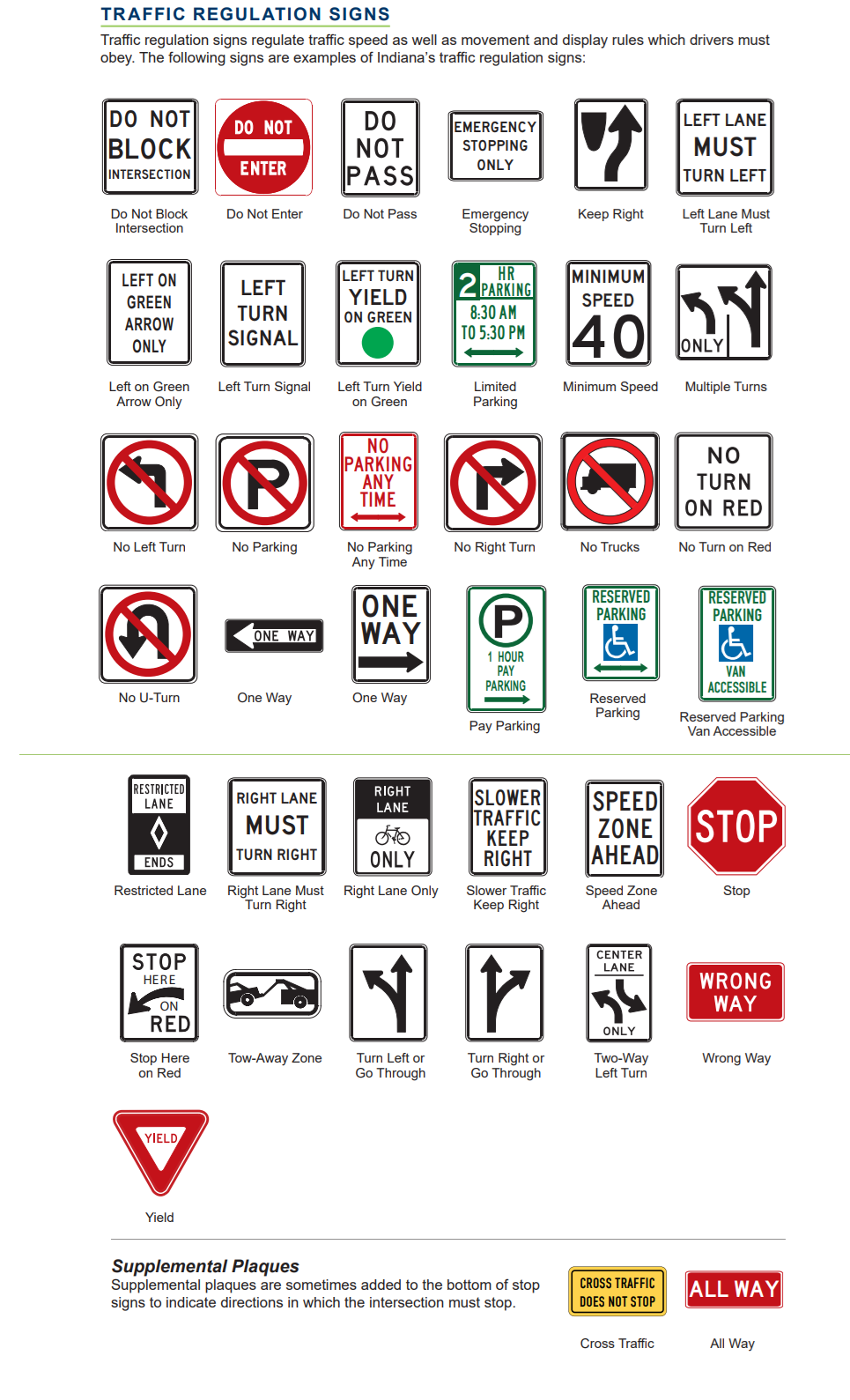Currently Empty: $0.00
Module 1:Introduction to Driving
Overview of driver education, Indiana licensing process, and driver responsibilities.
0/4
Module 2: Signs, Signals & Road Markings
Understanding traffic sign shapes, colors, common signs, and pavement markings.
0/4
Module 3: Rules of the Road
Explanation of right-of-way rules, speed limits in various zones, and navigating intersections and roundabouts safely.
0/4
Module 4: Basic Vehicle Control
Instruction on proper steering, braking, acceleration, turning, lane changing, and parking techniques.
0/4
Module 5: Sharing the Road
Guidance on interacting safely with pedestrians, cyclists, motorcyclists, school buses, and large trucks.
0/4
Module 6: Driving in Different Environments
How to adapt to rural and urban driving conditions, highway driving, and driving in adverse weather and nighttime conditions.
0/4
Module 7: Defensive Driving Techniques
Techniques for hazard avoidance, space management, applying the SIPDE method, and responding to aggressive drivers.
0/4
Module 8: Alcohol, Drugs & Distractions
Understanding how alcohol, drugs, and distractions impair driving, along with Indiana DUI laws.
0/4
Module 9: Vehicle Systems & Maintenance
Overview of dashboard indicators, pre-trip inspections, and basic vehicle maintenance best practices.
0/4
Module 10: Final Review & Assessment
Review of key driving concepts, test preparation tips, and reinforcing safe driving habits before the final exam.
0/3
Final Exam
60-question exam based on course content.
0/2

Traffic signs use shapes and colors to communicate important information quickly and clearly. Recognizing these visual cues is a critical skill for safe driving.
Common shapes and meanings:
-
Octagon: Exclusively used for STOP signs.
-
Inverted Triangle: Used exclusively for YIELD signs.
-
Circle: Used for railroad crossing advance warnings.
-
Diamond: Warns of possible hazards or changes in road conditions ahead.
-
Pentagon: Indicates school zones and school crossings.
-
Vertical Rectangle: Typically used for regulatory signs such as speed limits.
-
Horizontal Rectangle: Used for guide signs providing directional information.
Common colors and meanings:
-
Red: Conveys prohibitive instructions (e.g., STOP, YIELD, DO NOT ENTER).
-
Yellow: General warnings about road conditions ahead.
-
White: Regulatory information (e.g., speed limits).
-
Orange: Construction and maintenance warnings.
-
Green: Directional guidance (e.g., highway exits).
-
Blue: Motorist services (e.g., hospitals, rest areas).
-
Brown: Recreational and cultural interest areas.
Reference Resource:
The Indiana Driver’s Manual is provided as a reference for this lesson. The manual is published by the Indiana Bureau of Motor Vehicles (BMV) and is publicly available.
This document is not the property of Nexus Driving School, and we do not claim ownership or authorship of its content.
Direct link: https://thenexusdrivingschool.com/pdf/drivers-manual%20(1).pdf



